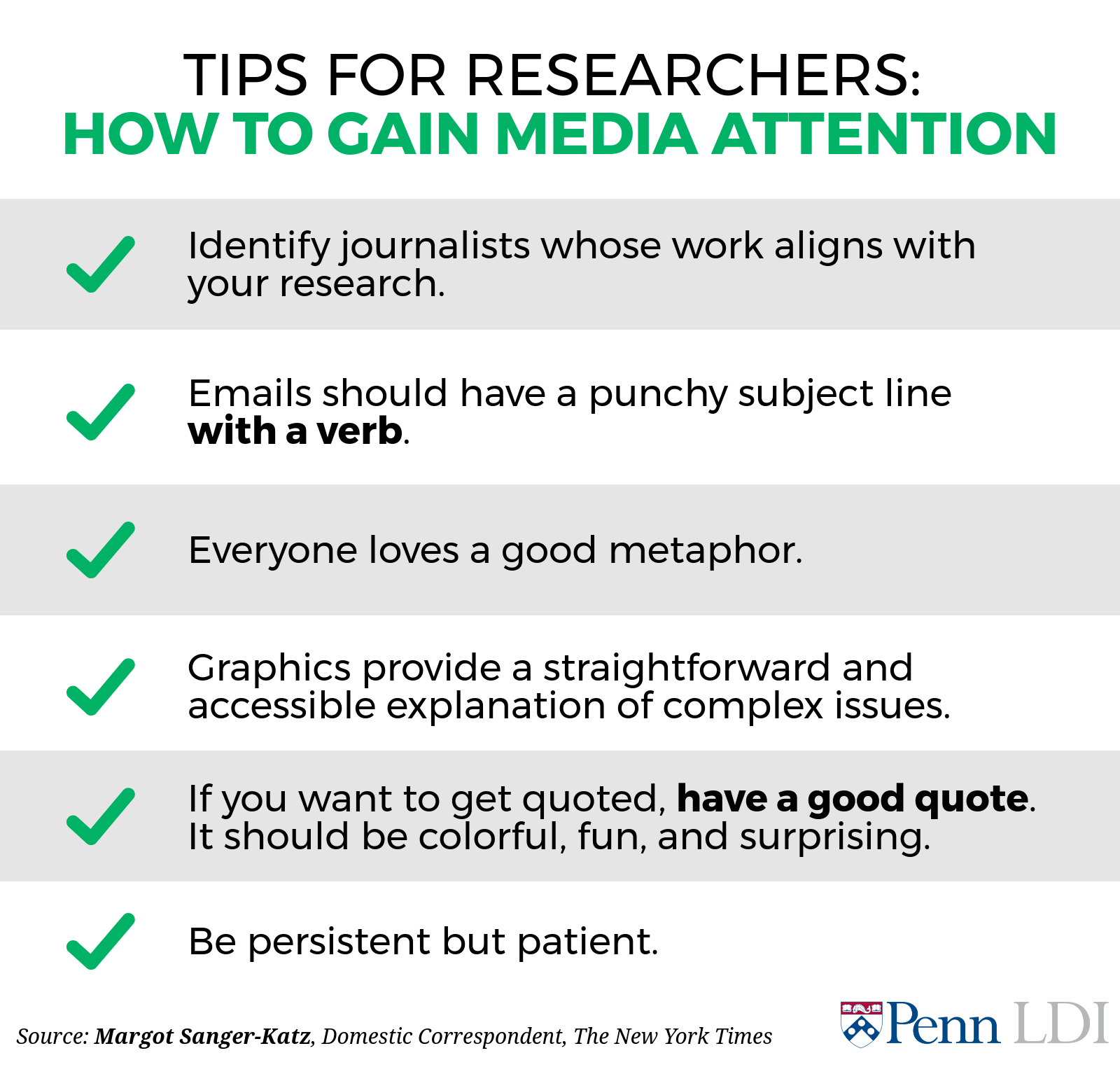Blog Post
Research and Shiny Objects: Tips to Gain Media Attention
A study doesn’t end with publishing its findings— for its impact to be fully realized, the findings must be disseminated. Even when research is adequately publicized, excessive jargon can prevent lay readers from understanding what it means. Since the clarity of scientific abstracts is declining over time, academics must go beyond publication to make their work accessible. One way to surmount the information barriers is to collaborate with journalists, who can help translate our research into action.
Margot Sanger-Katz, who covers health policy for The New York Times, discussed ways to improve the alliance between academia and the media when she visited Penn’s Leonard Davis Institute recently. Sanger-Katz writes for The Upshot, a data-driven and policy-oriented section of the Times. Over the last year, she has walked her readers through the politically contentious debates on health care. In addition to clarifying complex subjects, she frequently incorporates academic expertise into her stories. For instance, LDI’s Mark Pauly contributed to her March 2017 article, explaining why the removal of essential health benefits could lead to the government subsidizing plans that covered aromatherapy but not hospitalizations.
Research hasn’t just informed Sanger-Katz’s journalism; Sanger-Katz’s journalism has also informed research. In a June 2017 article written with Julie Creswell and Reed Abelson, the unsavory practices of EmCare, a physician-staffing company used by emergency departments, were explored at length. Their article was bolstered by researchers from Yale, who empirically identified increases in out-of-pocket billing and the number of hospital admissions. Thanks to their collaboration, EmCare is now under legislative scrutiny and was recently accused of “gaming the system” by Senator McCaskill from Missouri.
Sanger-Katz also discussed her initial reluctance and eventual embrace of Twitter. She noted its ability to prolong a study’s relevance—while press releases have short term effects, more prescient studies deserve a longer shelf life. Twitter offers an excellent platform to reintroduce research when relevant to a policy discussion.
So how exactly can academics harness the power of the media? Describing journalists as squirrels in search of shiny objects, Sanger-Katz offered some concrete tips for grabbing their attention.

To maximize their impact, academics must remember their non-academic audience. As we weather what feels like a never-ending political storm and an assault on science, it is even more critical for important but unintelligible studies to be deciphered and disseminated. Fortunately, journalists like Sanger-Katz are already helping their readers to access, consume, and understand our work. By improving collaboration between academia and the media, we can ensure that research doesn’t occur in a vacuum.